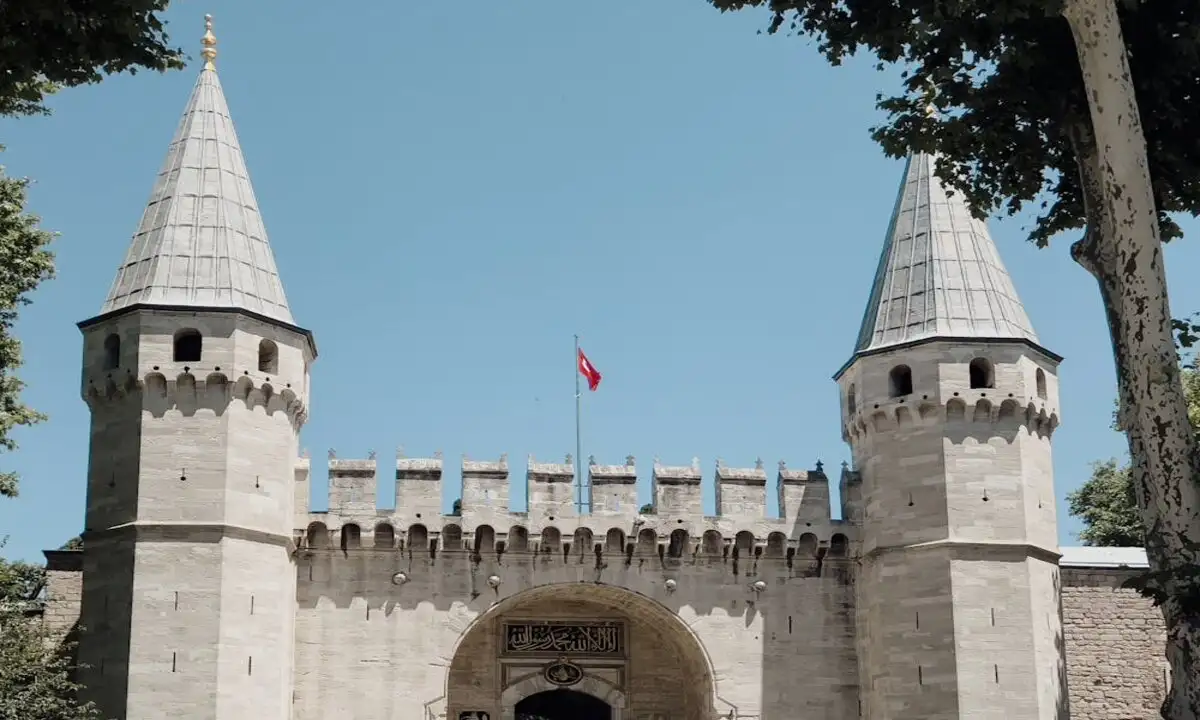Topkapi Palace, known as “Topkapı Sarayı” in Turkish, is one of Istanbul's most iconic landmarks and a testament to the grandeur of the Ottoman Empire. As the primary residence of the Ottoman sultans for nearly 400 years, it stands as a remarkable historical site that showcases the empire’s architectural, cultural, and political significance. Surrounded by the stunning views of the Bosphorus and the historical districts of Istanbul, Topkapi Palace invites visitors to explore a world of opulence, intrigue, and intricate craftsmanship. This blog delves into the history, architecture, collections, and visitor experience at Topkapi Palace, revealing why it's an essential stop on any journey through Istanbul.
Historical Background:
The Foundation of the Palace:
Construction of Topkapi Palace began in 1459, just a few years after the Ottoman conquest of Constantinople by Sultan Mehmed II. Initially built as a small fortress, the palace grew over the years through significant expansion and renovation.
Symbol of the Ottoman Empire:
Topkapi Palace served as the administrative center and the royal residence of the Ottoman sultans for over four centuries, from the 15th century to the mid-19th century. It was the site where key decisions affecting the empire were made and where the sultans ruled from. The palace embodied the power, culture, and wealth of the empire, becoming a vibrant hub of political and social life.
Decline and Transition:
By the 19th century, as the empire faced challenges and reforms, the sultans began to favor the Dolmabahçe Palace, located further along the Bosphorus, which was more representative of modern architectural trends. Consequently, Topkapi Palace was eventually converted into a museum in 1924, preserving its rich heritage for future generations.
Architectural Marvel:
Layout and Design:
Topkapi Palace is characterized by its sprawling complex, comprising several courtyards, gardens, and pavilions. The palace covers approximately 700,000 square meters, with an intricate layout that mirrors the hierarchical structure of the Ottoman court.
Distinct Areas of the Palace:
• First Courtyard: The outermost courtyard served as a public space, accessible to visitors. It features the Imperial Gate, leading into the palace and is adorned with remarkable gardens and fountains.
• Second Courtyard: This area housed the Divan (Imperial Council), where meetings were held. Visitors can explore the beautiful tiled walls, gardens, and the impressive Gate of Salutation.
• Third Courtyard: Reserved for the sultan and his family, this courtyard features the Harem's entrance, pavilions, and the exquisite Baghdad Kiosk, showcasing stunning tile work and breathtaking views of the Bosphorus.
• Fourth Courtyard: The most private area, this courtyard contains the palace's kitchens, the throne room, and the impressive library, all of which offer insight into the daily life of the sultans.
Luxurious Interiors:
The interiors of Topkapi Palace reflect the opulence of the Ottoman court. Visitors will be enchanted by the intricate tile work, exquisite calligraphy, and lavish furnishings that adorn the rooms, drawing on both Islamic and Byzantine influences.
Famous Features & Artifacts:
1. The Harem:
The Harem is one of the most fascinating parts of Topkapi Palace. It served as the private quarters of the sultan, his wives, concubines, and children. Visitors can explore the beautifully decorated rooms and learn about the daily life within this intriguing space.
Topkapi Palace houses an impressive collection of holy relics believed to belong to the Prophet Muhammad and other important figures in Islamic history. These relics include the Prophet’s mantle, hair, and various artifacts that attract religious pilgrims and visitors alike.
3. The Imperial Treasury:
Another highlight of the palace is the Imperial Treasury, showcasing a spectacular collection of royal jewelry, ornate weapons, and artifacts made of precious metals. Among the most famous items is the Topkapi Dagger, known for its exquisite craftsmanship and historical significance.
4. The Throne Room:
The Throne Room features intricate gold and gem-encrusted thrones, symbolizing the sultan's power and grandeur. The lavish decorations and intricately designed ceilings showcase the opulence of the Ottoman court.
Visiting Topkapi Palace:
Opening Hours and Admission:
Topkapi Palace is open to visitors year-round, with specific hours based on the season. It’s recommended to check the official website for the most current information on admission fees and visiting hours.
Guided Tours:
To fully appreciate the history and significance of Topkapi Palace, consider taking a guided tour. Knowledgeable guides will provide deeper insights into the palace’s history, architecture, and important artifacts, enriching your experience.
Best Time to Visit:
Early mornings or late afternoons are ideal times to explore Topkapi Palace to avoid large crowds. Visiting during weekdays can also enhance your experience, allowing for a more relaxed exploration of this historical site.
Photography:
The stunning architecture and intricate details of the palace make it a photographer's paradise. While photography is permitted in most areas, be sure to respect any signs indicating restrictions, especially in the Harem and private rooms.
Conclusion:
Topkapi Palace stands as a magnificent relic of the Ottoman Empire, providing insight into a bygone era of wealth, culture, and power. Its stunning architecture, captivating history, and rich collection of artifacts invite visitors to explore the grandeur of the past. Whether you are an architecture enthusiast, a history buff, or simply seeking an extraordinary travel experience, Topkapi Palace is a must-visit destination that captures the heart and soul of Istanbul. Embrace the opportunity to immerse yourself in the legacy of the Ottoman Empire, and discover the charm and intrigue that make Topkapi Palace an unforgettable highlight of Istanbul.














